Monthly Metrics: Indiana's Economic and Workforce Indicators
Number of Hoosiers Living in Poverty
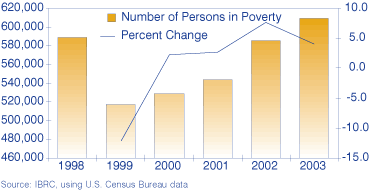
Based on small area income and poverty estimates data recently released by the U.S. Census Bureau, Indiana's total poverty rate of 10 percent for 2003 was tied for 13th lowest in the country, along with Colorado, Nebraska and Utah. At 6.4 percent, New Hampshire had the lowest poverty rate in the country. However, with 609,171 Hoosiers living in poverty, Indiana ranked 19th for the most individuals living in poverty. Unfortunately, that number has steadily increased since 1999.
Unemployment in Indiana and the United States
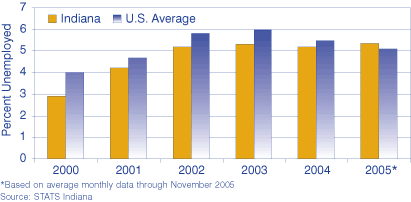
Between 2000 and 2004, Indiana's unemployment rate was lower than the U.S. average; however, over the last several years, the gap between them has narrowed. Indiana's unemployment rate of 2.9 percent in 2000 was 1.1 percentage points better than the U.S. average, but by 2004, the difference between the unemployment rates decreased to 0.3 percentage points. Based on monthly data through November 2005, Indiana's average unemployment rate for 2005 was 5.4 percent and exceeded the U.S. average of 5.1 percent.
Median Household Income and Percent Change in Indiana and the United States
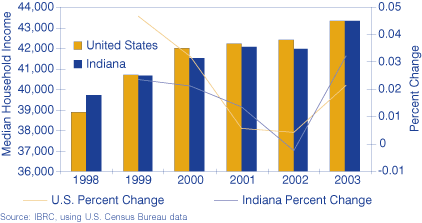
Between 1999 and 2002, Indiana's median household income trailed the U.S. average, according to the Census Bureau's small area income and poverty estimates. However, with a 3.2 percent increase in median income between 2002 and 2003, Indiana was able to catch up to the U.S. average median household income of $43,318.
Total Poverty by State, 2003
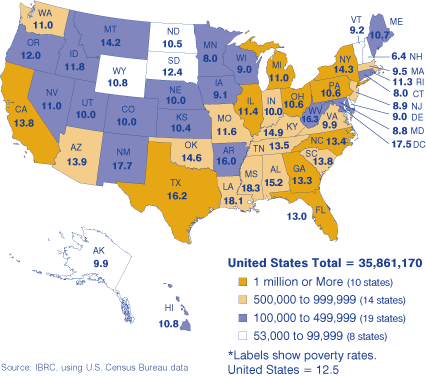
With a poverty rate of 10 percent in 2004, Indiana tracked closely with its Midwestern neighbors (11.2 percent average, including Wisconsin). Due to their larger populations, Illinois, Michigan and Ohio each had more than 1 million individuals living in poverty, while Indiana had just over 600,000. At 15 percent, the Southeastern states (1) had the highest average poverty rate in the country, while the Northeastern states (2) enjoyed the lowest average poverty rate of 9.0 percent.
- Southeastern states include Alabama, Arkansas, Florida, Georgia, Louisiana, Mississippi, North Carolina, South Carolina and Tennessee.
- Northeastern states include Connecticut, Delaware, Maine, Maryland, Massachusetts, New Hampshire, New Jersey, Rhode Island and Vermont.
Education Rankings, 2005–2006 School Year
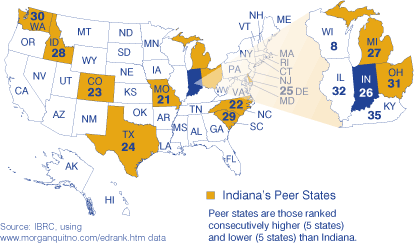
According to Morgan Quitno's annual reference book Education State Rankings, 2005–2006 (www.morganquitno.com/edrank.htm), Indiana is the 26th smartest state in the country for the 2005–2006 school year. Though Indiana may be rated in the middle for the United States, it ranks higher than its Midwestern neighbors, with Michigan at 27th, Ohio at 31st, Illinois at 32nd and Kentucky at 35th. Wisconsin, however, ranked in the top ten, as the eighth smartest state. The rankings were based on 21 factors, including average class size, pupil-to-teacher ratios, average daily attendance, high school drop out rates and average proficiency test scores.
